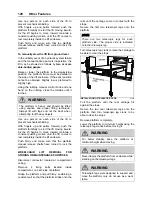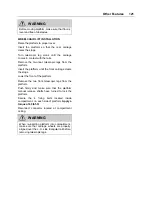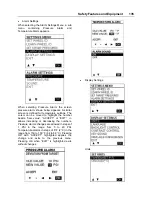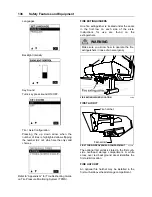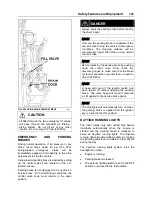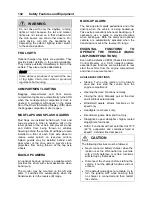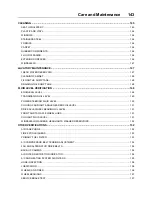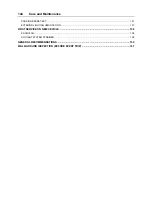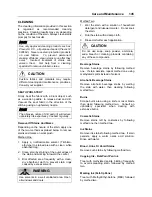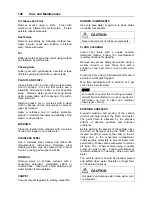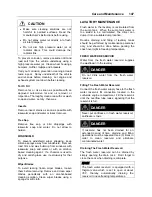
Safety Features and Equipment
132
NOTE
The
Protection Panel
continuously
monitors system integrity and displays the
information via the “SYSTEM OK” and fire
“TROUBLE” indicators.
Operational sequence (fire)
1. A fire detector or liner thermal detector
detects a fire in the engine compartment and
sends a signal to the
Protection Panel
in the
driver’s area.
2. The fire “ALARM” lamp on the
Protection
Panel
will illuminate solid red and an audible
alarm will sound.
3. The operator shall bring the vehicle to a safe
stop.
4. The system automatically shuts down the
vehicle engine and discharges the
extinguisher into the engine compartment 15
seconds after the fire alarm starts unless
advanced or delayed by the operator.
o
If the operator presses the
Manual
Activation Switch
, all delays will
terminate and the engine shutdown and
extinguisher discharge will occur
immediately.
o
If the operator presses and releases the
Delay Engine Stop
switch once, the
engine shutdown and extinguisher
discharge will be delayed by an additional
15 seconds.
WARNING
The engine will stop 15 seconds after the fire
alarm starts. The operator must be prepared
to bring the vehicle to a safe stop as soon as
the alarm sounds. Steering may become
difficult after engine shutdown. If more time is
required, the “DELAY ENGINE STOP” switch
may be pressed and released for an
additional 15 second delay.
WARNING
The extinguisher discharge may cause an
obscuring cloud behind and near the vehicle.
5. The red fire “ALARM” lamp and audible alarm
will stay on. The yellow fire “TROUBLE” lamp
will also be on indicating a discharged
extinguisher.
6. The system must be reset and the fire
extinguisher removed and replaced in
accordance with the System Reset portion of
the Kidde Dual Spectrum Operation &
Maintenance Manual.
TIRE PRESSURE MONITORING SYSTEM
(TPMS) (OPTIONAL)
The coach may be equipped with the optional
Tire Pressure Monitoring System (TPMS).
Description
System includes the following elements:
•
Special tire valves;
•
RF sensor inside each tire, fixed to the
valve;
•
3 antennas to receive the sensors RF signal
(one in the front spare tire compartment, one
above the L.H. side rear wheels and one
above the R.H. side rear wheels);
•
A TPMS receiver connected to the antennas
and located in the front electrical
compartment, above the CECM;
•
A TPMS display built in the L.H. dashboard
panel;
•
A “FLAT TIRE” telltale panel indicator.
The section of the special tire valves located
inside the tire is dome-shaped to allow fixing the
sensor.
Sensors provide continuous tire pressure and
temperature reading.
The normal sensor battery lifespan is 5 years.
The remaining lifespan is displayed as a
percentage in the TPMS display.
NOTE
It is recommended to check the remaining
battery lifespan when changing the tires in
order to replace the sensors at the same time
if they are due for replacement before the next
change.
The screw fixing the sensor to the valve can only
be used once because the threads are powder-
coated to lock the sensor in place and prevent
unfastening.
Summary of Contents for X3-45 2011
Page 1: ...COACH MANUFACTURER OPERATOR S MANUAL X3 45 COACH PA1581...
Page 4: ......
Page 6: ......
Page 10: ......
Page 24: ......
Page 128: ......
Page 134: ......
Page 171: ...Technical Information 165 X3 45 OVERALL DIMENSIONS SIDE ELEVATION 18673...
Page 172: ...Technical Information 166 X3 45 OVERALL DIMENSIONS TOP FRONT AND REAR VIEWS 18674...
Page 182: ......
Page 186: ......
Page 206: ......



